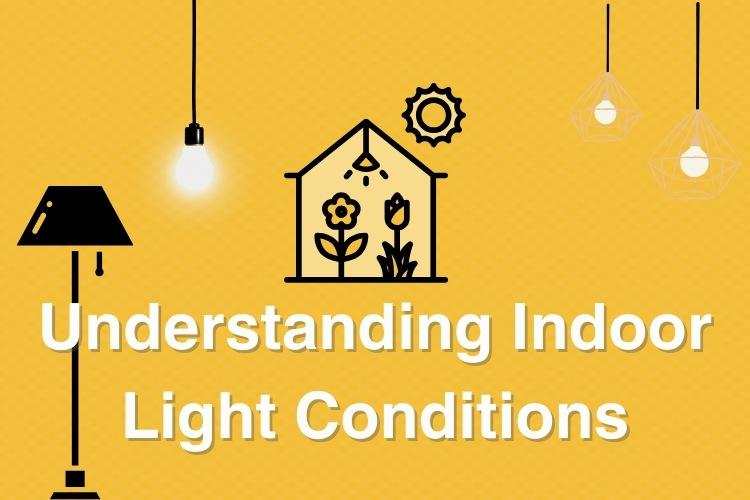Arduino UNO Q bridges high-performance computing with real-time control.
How to Optimize Solar Cells For Indoor Use?

We all know that solar panels are used to generate clean electricity, which can be utilized in our daily activities by either directly converting DC to AC or storing it in a battery. However, this is only possible during the daytime, while at night, the system remains inactive. With the growing trend of energy-efficient devices and the increasing demand for sustainable power sources, optimizing solar cells for indoor use has become a key focus in the renewable energy sector. Unlike outdoor environments where sunlight is abundant, indoor lighting is less intense and has a different spectral distribution. To make solar cells viable for indoor applications, several factors must be considered. And that’s our topic for today, which we will discuss in this article.
Let's look at all the factors that need to be considered for indoor solar power generation.
Understanding Indoor Light Conditions
When considering light conditions, two key factors influence the efficiency of power generation,

Light Intensity
Indoor light is significantly weaker than direct sunlight. For comparison, typical indoor light intensities range from 100 to 1,000 lux, while direct sunlight is around 100,000 lux. Due to this lower intensity, we need a solar cell with high sensitivity to generate power more efficiently in reduced light conditions.
Light Spectrum
Indoor lighting, like LED, fluorescent, and incandescent bulbs, primarily emits light in the visible spectrum (400–700 nm). This differs from sunlight, which also includes ultraviolet (UV) and infrared (IR) components. Solar cells optimized for the specific wavelengths of indoor light can perform more efficiently in these conditions.
Now that we understand the conditions of the installation space, let's explore possible solutions.
Possible Optimizations for Solar Cells for Indoor Use
Let's look at some of the possible optimizations that can be done in solar cells to improve indoor efficiency.

Material Selection
Amorphous Silicon (a-Si)
Amorphous silicon is well-suited for low-light environments due to its ability to absorb light across a broad spectrum, including the visible range. Its performance in diffused light conditions makes it a strong candidate for indoor applications. It remains the most well-developed thin-film solar cell, but unfortunately, it has an efficiency of less than 10% in commercial models.
Organic Photovoltaics (OPVs)
OPVs are flexible, lightweight, and can be adjusted to optimize absorption within the visible light spectrum, making them ideal for capturing the types of light commonly found indoors. Their tunability allows them to be tailored to specific lighting conditions, enhancing efficiency. One significant advantage is their lower cost compared to previous generations of solar panels, making production more economical.
Dye-Sensitized Solar Cells (DSSCs)
Dye-sensitized solar cells (DSSCs) perform exceptionally well in low-light conditions and can be optimized to absorb specific wavelengths emitted by indoor lighting. Their design allows for efficient energy conversion, even under diffuse light, making them ideal for indoor applications. Additionally, their semi-transparent and flexible nature enables them to blend seamlessly with indoor aesthetics.
Now that you have an idea about material selection, the next crucial factor to consider is design optimization.
Design Optimization
Design optimization plays a key role in maximizing the performance of indoor solar cells by addressing the specific challenges posed by low-light environments. It involves enhancing light absorption, minimizing losses, and ensuring the efficient conversion of energy.
Spectral Tuning
Adapting the bandgap of solar cell materials to match the spectrum of indoor lighting can significantly improve performance. For example, solar cells can be designed to maximize absorption in the visible light range, where indoor lights emit most of their energy.
Antireflection Coatings
Applying antireflection coatings helps reduce the loss of light through reflection, ensuring more light is absorbed by the solar cell. This is particularly important in indoor settings, where light levels are already low.
Surface Texturing and Light Trapping
Texturing the surface of the solar cell can increase light absorption by trapping more light within the cell. Techniques such as micro-structuring or using photonic crystals can enhance light capture and improve overall efficiency.
Thin-Film Technologies
Thin-film solar cells are well-suited for indoor applications due to their strong performance in low-light conditions. Their flexibility allows integration into various surfaces, such as walls or windows, maximizing energy harvesting potential. Multi-junction or layered designs, where each layer targets a different part of the light spectrum, enhance efficiency by capturing more light, making them particularly effective in environments with diverse lighting sources.
Circuit and System Design
Optimizing solar cells alone is not enough to achieve maximum efficiency; the surrounding electronics must also be designed for low power consumption. Limited power generation requires improvements in both circuit and system design to effectively utilize the available energy.
Low Power Electronics
Pairing indoor solar cells with low-power electronics is essential. Devices designed to operate on minimal energy can function efficiently with the limited power generated by indoor solar cells.
Energy Storage Solutions
Incorporating energy storage components, such as capacitors or rechargeable batteries, allows solar cells to store energy when light is available and release it when needed. This provides a consistent power supply, even with fluctuating lighting conditions.
Placement and Orientation
Proper placement and orientation are crucial for maximizing the efficiency of solar panels in indoor environments.
Strategic Placement
Solar cells should be positioned in areas with the most consistent light exposure, such as near windows or directly under artificial lighting. This strategic placement can significantly enhance the amount of light the cells capture and convert into energy.
Optimized Angles
Positioning the solar cells at angles that optimize exposure to light sources can further improve performance. For instance, tilting the cells towards the main light source can increase light absorption and enhance energy conversion efficiency.
Environmental Considerations
When designing indoor solar power systems, it's essential to account for environmental factors that could affect the performance and longevity of the solar cells. Even though indoor environments are more controlled than outdoor ones, they still pose unique challenges that must be addressed to ensure efficient and long-lasting energy generation.
Temperature Management
Indoor environments typically have stable temperatures, but thermal management is still important for solar cells. Excessive heat can decrease the efficiency of certain materials, so it's crucial to maintain optimal temperatures to ensure consistent performance.
Durability and Lifespan
To be economically viable, indoor solar cells need to be durable and have an extended lifespan. Selecting materials and designs that resist degradation over time, even in stable indoor conditions, will lead to better returns on investment and reliable energy generation.
Conclusion
Optimizing solar cells for indoor use requires choosing the right materials, designing them for specific lighting conditions, and placing them strategically to maximize light capture. By addressing these aspects, indoor solar cells can efficiently power low-energy devices, aligning with the goal of sustainable energy.









